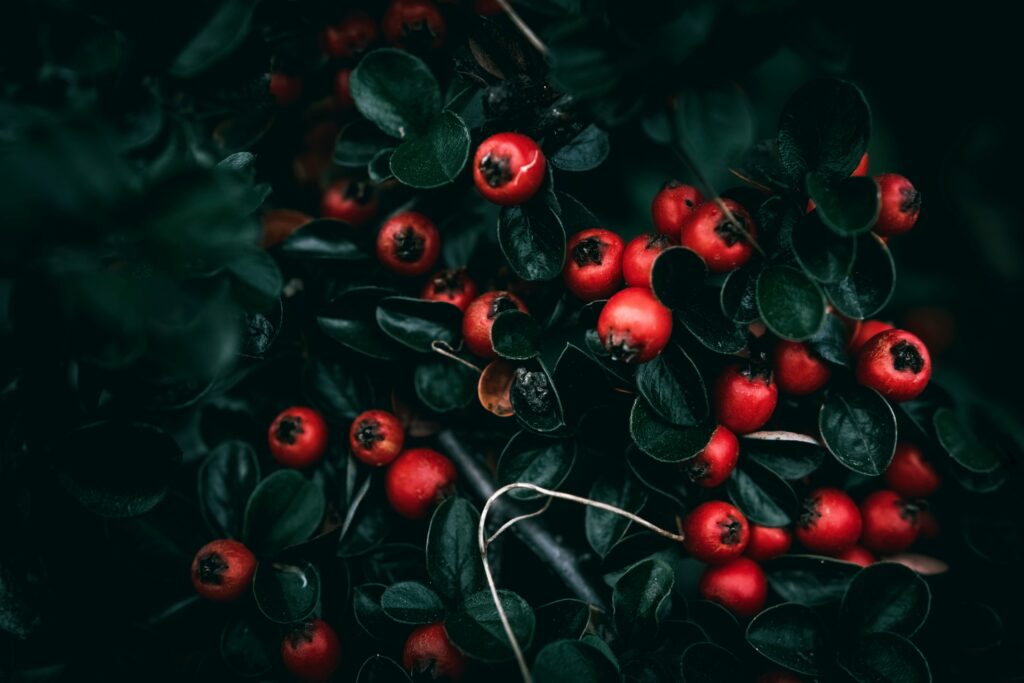
Cotoneaster plants, known for their potential medicinal properties, have been the focus of a fascinating new study. Researchers from Poland have explored the ability of four non-native Cotoneaster species to thrive in the climatic conditions of central and eastern Europe, outside their natural habitats. By examining the morphology, anatomy, and photosynthetic efficiency of the leaves, as well as levels of oxidative stress, the team has gained valuable insights into how these plants adapt to new environments. The findings suggest that Cotoneaster species are remarkably resilient, showcasing their potential for pharmaceutical applications. This research not only expands our understanding of plant adaptability but also highlights the importance of studying non-native species to unlock their therapeutic benefits. Cotoneaster, photosynthesis, oxidative stress, medicinal plants.
Exploring the Adaptability of Cotoneaster Species
Plants belonging to the genus Cotoneaster have long been valued for their potential therapeutic properties, particularly in traditional Asian medicine. However, as the natural habitats of many Cotoneaster species are located in Asia, Africa, and southern Europe, introducing them to other climatic conditions, such as central and eastern Europe, can expose them to various abiotic and biotic stresses. These stresses can affect the plants’ bioactive properties, which are of great importance for their potential pharmaceutical applications.

To address this, a team of researchers from Poland set out to investigate the performance of four non-native Cotoneaster species – Cotoneaster roseus, Cotoneaster hissaricus, Cotoneaster hsingshangensis, and Cotoneaster nebrodensis – when grown in the climatic conditions of eastern Poland. The study focused on assessing the plants’ leaf morphology, anatomy, and the efficiency of their photosynthetic apparatus, as well as evaluating the levels of lipid peroxidation, an indicator of oxidative stress.
Leaf Structure and Photosynthetic Efficiency
The researchers conducted a detailed analysis of the leaves, examining their morphological and anatomical features. They found that the leaves of the four Cotoneaster species shared many similarities, with no apparent anomalies or stress symptoms. The leaves were dark green, had entire margins, and exhibited slight differences in shape and size, likely due to species-specific characteristics.

Fig. 1
To assess the photosynthetic efficiency of the plants, the researchers measured the concentrations of chlorophyll and carotenoids, as well as various chlorophyll fluorescence parameters. The results revealed that Cotoneaster roseus had the highest chlorophyll concentration and the highest values for the vitality index (Rfd) and the quantum yield of photosystem II (QY), indicating an efficient photosynthetic apparatus.

Fig. 2
Interestingly, Cotoneaster nebrodensis showed the lowest values for photochemical quenching (qP), maximum fluorescence (Fm), Rfd, and QY, suggesting a lower efficiency of its photosynthetic apparatus compared to the other species. However, this species also exhibited the lowest level of lipid peroxidation, indicating a lower degree of oxidative stress.
Stress Response and Adaptation
The researchers also measured the levels of anthocyanins and lipid peroxidation in the leaves. Anthocyanins are known to play a role in plant stress response, while lipid peroxidation is a marker of oxidative stress.
The results showed that Cotoneaster roseus had the highest concentration of anthocyanins, which may suggest a more pronounced stress response in this species. However, the other species also demonstrated good physiological conditions, as evidenced by the overall chlorophyll fluorescence parameters and lipid peroxidation levels.
These findings indicate that the four Cotoneaster species are well-adapted to the climatic conditions of central and eastern Europe, outside their natural habitats. The observed differences between the species are likely due to their inherent genetic and physiological characteristics, rather than a result of the non-native growth conditions.
Unlocking the Therapeutic Potential
This study is significant because it provides the first comprehensive assessment of the physiological parameters of these four Cotoneaster species, confirming their ability to thrive in the climatic conditions of central Europe. This is particularly important, as it suggests that these plants can be a reliable source of raw material for potential pharmaceutical applications, such as the treatment of skin diseases.
The researchers’ previous studies have already demonstrated the remarkable anti-inflammatory, antioxidant, and antibacterial properties of extracts from the leaves and fruits of these Cotoneaster species, highlighting their therapeutic potential. This new research further supports the idea that these non-native Cotoneaster species can be successfully cultivated in central and eastern Europe, opening up new opportunities for the development of innovative natural medicinal products.
Exploring the Broader Implications
The findings of this study not only contribute to our understanding of plant adaptability but also have broader implications for the scientific community and society. By studying the physiological responses of non-native species in new environments, researchers can gain valuable insights into the mechanisms underlying plant acclimation and stress tolerance.
This knowledge can inform efforts to conserve and manage plant biodiversity, as well as guide the introduction of potentially beneficial non-native species into new regions. Additionally, the successful cultivation of Cotoneaster species outside their natural habitats demonstrates the importance of exploring the therapeutic potential of plants from diverse geographical origins, which may lead to the discovery of novel and effective natural medicines.
In conclusion, the comprehensive study of the four Cotoneaster species has revealed their remarkable ability to adapt to the climatic conditions of central and eastern Europe, despite being non-native to the region. This research not only advances our scientific understanding of plant physiology and stress response but also highlights the promising therapeutic applications of these valuable medicinal plants.
Author credit: This article is based on research by Barbara Krzemińska, Izabela Borkowska, Maria Malm, Dorota Tchórzewska, Jaco Vangronsveld, Andon Vassilev, Katarzyna Dos Santos Szewczyk, Małgorzata Wójcik.
For More Related Articles Click Here
